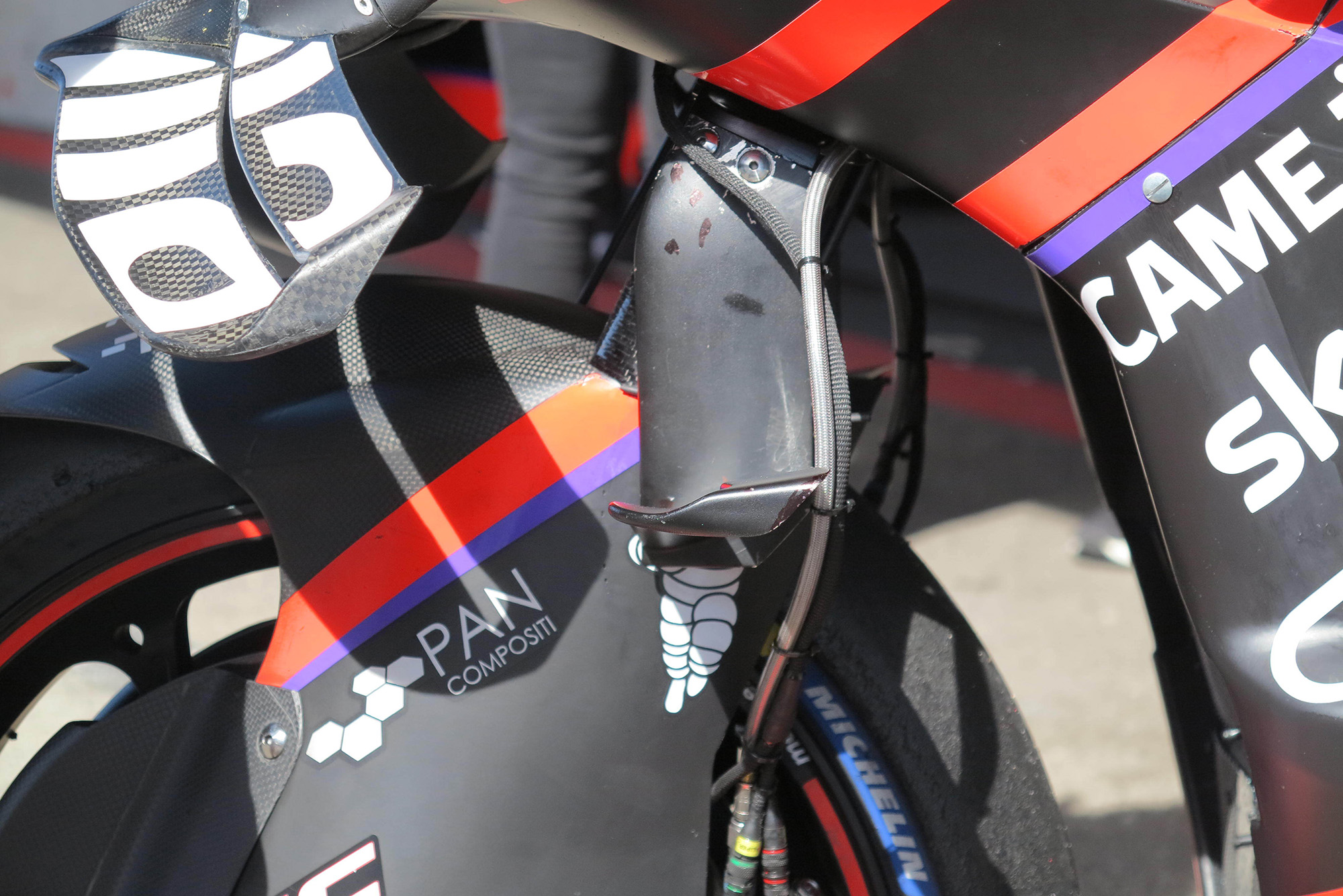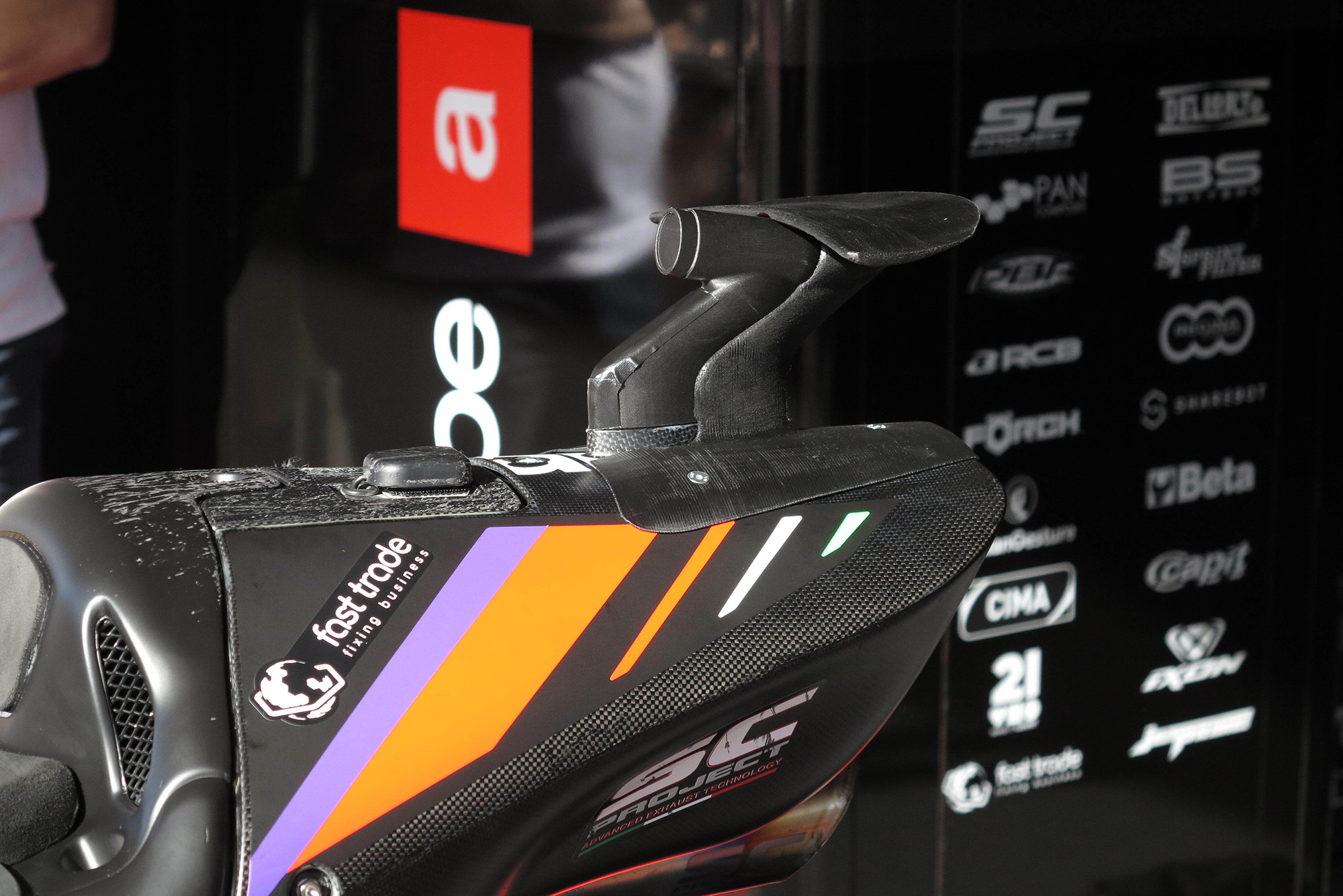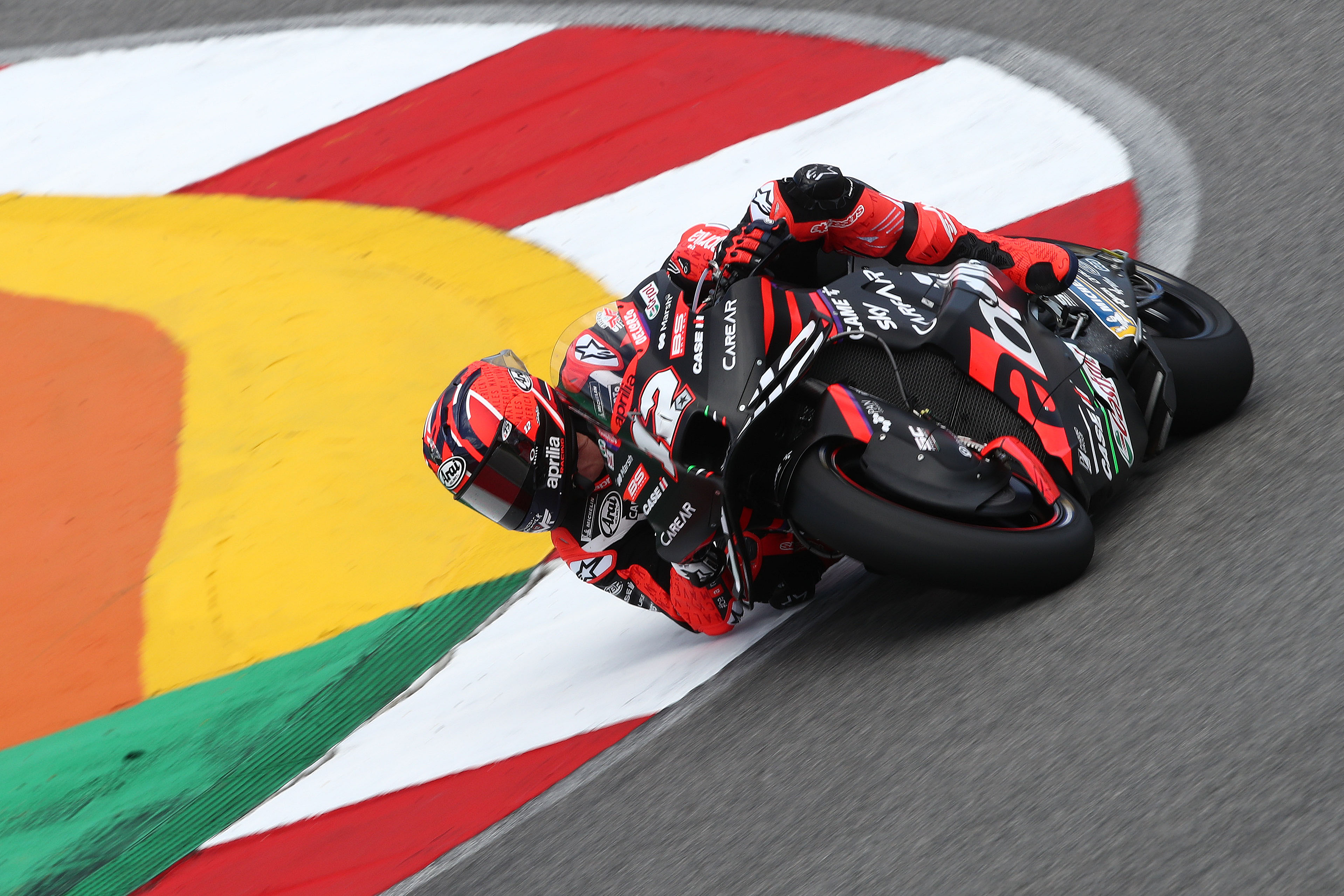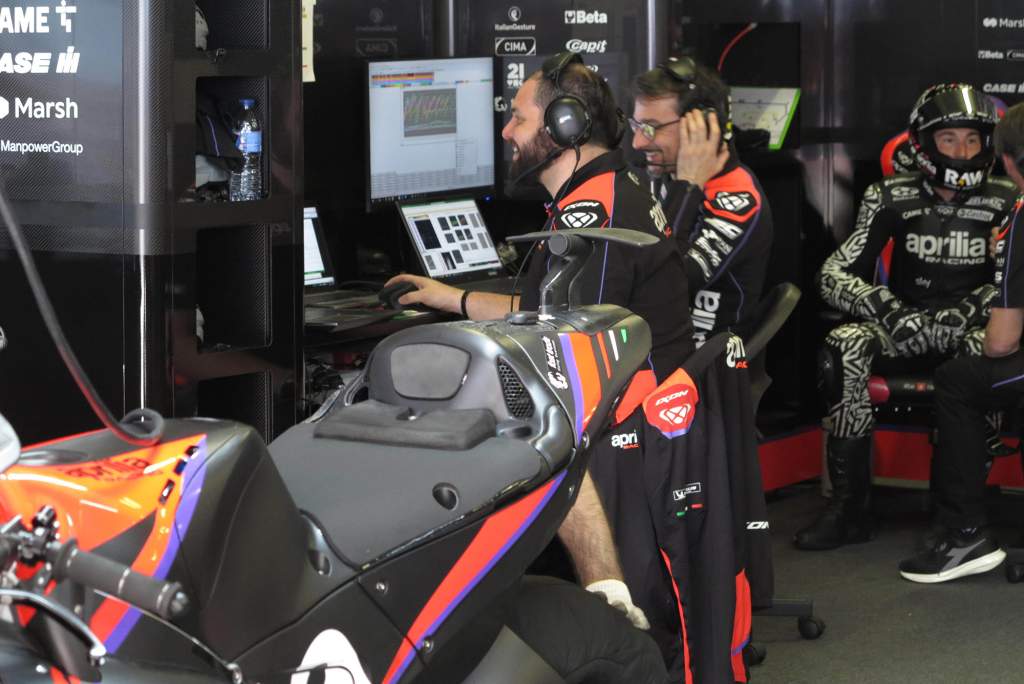Aprilia has again demonstrated its position as MotoGP’s new driving force in aerodynamic development by debuting a whole host of new wing modifications to the already dramatic-looking new RS-GP on the opening day of the final pre-season test at Portimao.
The 2023 machine Aprilia officially unveiled on Friday ahead of the test already represented a significant step forwards in aero work as it added together all the new components trialled over the course of the 2022 season. That was Aprilia’s last year where it could modify fairings mid-season under MotoGP’s concession rules to help lesser-performing teams, a status it lost thanks to Aleix Espargaro’s title-fighting year.
Those developments included the new ‘ground effect’ lower fairing, a bulbous component designed to increase the downforce created without significantly affecting the drag produced (and the subsequent effect that it has on top speed).
They also included shrouds around the front of the bike to cover the brake disc and calliper, and encasing the upper exhaust, all a part of the process to further streamline the bike and mitigate the impact of its large front wing.
That wing is designed with different goals, not to decrease drag but to help make the bike as stable as possible not just on the straights but particularly under braking, an area where the RS-GP excels and what many riders were suggesting at the last test at Sepang last month has become the most critical part of the whole lap.

Aprilia’s efforts in that area have taken another step forward at Portimao with three radical additions to the bike across the front and rear of the machine.
First to appear were new secondary wings behind the main set, attached directly to the forks of the bike, with Espargaro trialling the parts on one machine before team-mate Maverick Vinales followed suit and then continued with them.

That was only a warm-up to the main additions, though, with downward-facing blades then added on the swing arm, replicating something tried by Moto2 teams a number of years ago to smooth the airflow coming off the back of the bike.

Those were then joined by a reappearance of Aprilia’s Formula 1-style rear spoiler, first used briefly by test rider Lorenzo Savadori at Mugello last year but absent since then.
Now modified to include a built-in mount for the bike’s rear onboard camera, it suggests a more finalised version of a component that Espargaro said last year made a significant difference to the bike.

“I was not able to try the rear wing,” he said at Mugello last May, “but I saw the data from the windtunnel and it’s interesting.
“It looks like it’s just pure marketing, but believe me, it makes a difference.
“We are lacking a little bit of weight on the rear. This is why I cannot increase the engine brake, so I pushed them to create more load on the rear.
“They’re working in different areas to improve this and one was the aerodynamics.”
APRILIA SEEMS DUCATI’S MAIN THREAT

The opening day of the Portimao test, on which both Aprilia factory riders had crashes, has largely followed the pattern of the three days of Sepang – with Ducati’s fleet of GP23s and GP22s imperious but Aprilia the closest rival.
Asked about this perception by MotoGP.com, Aprilia Racing CEO Massimo Rivola replied “Maybe on some tracks, yes”.
“Unfortunately the Ducatis are too many and all very, very fast,” he continued. “For sure being the first of the others is, let me say, the target.
“I see that everybody anyway is growing session after session – Fabio [Quartararo on the Yamaha] was fast [here] immediately, I expect everybody to get closer and closer.
“For sure Ducati has an advantage in all data, they are fast immediately because they have the right set-up, they can start FP1 in race mode straight away.”
As for Aprilia’s year-on-year improvement, Rivola echoed the impressions of Sepang.
“If from last year we found, let’s say, two tenths, it’s already a big step. I can’t put a number on it yet, two tracks are not enough to determine it, but I think it’s a bit better.
“A bit on aero, a bit on engine, we are working on electronics and we know we can move that also to the satellite team [RNF].
“Let’s see. It’s never enough – to keep improving is a target. I think it’s a small step but it’s a step.”




